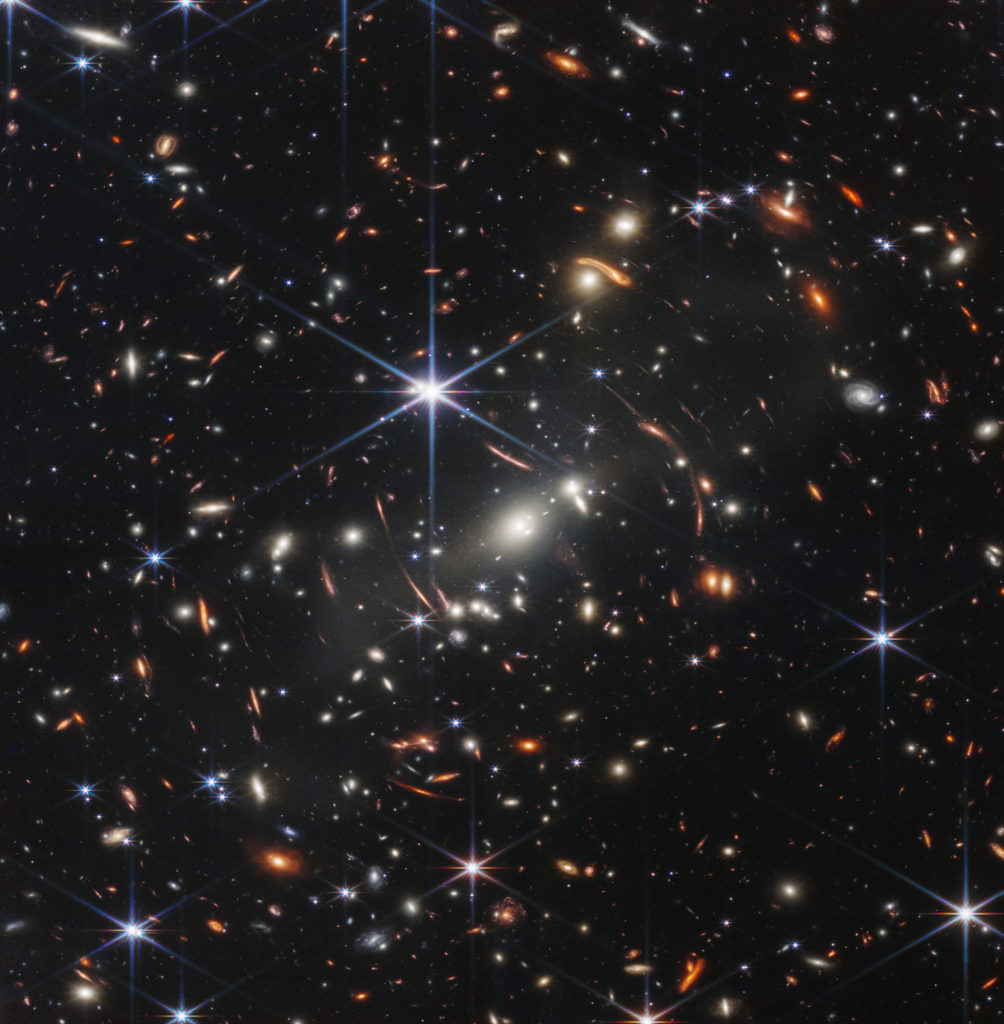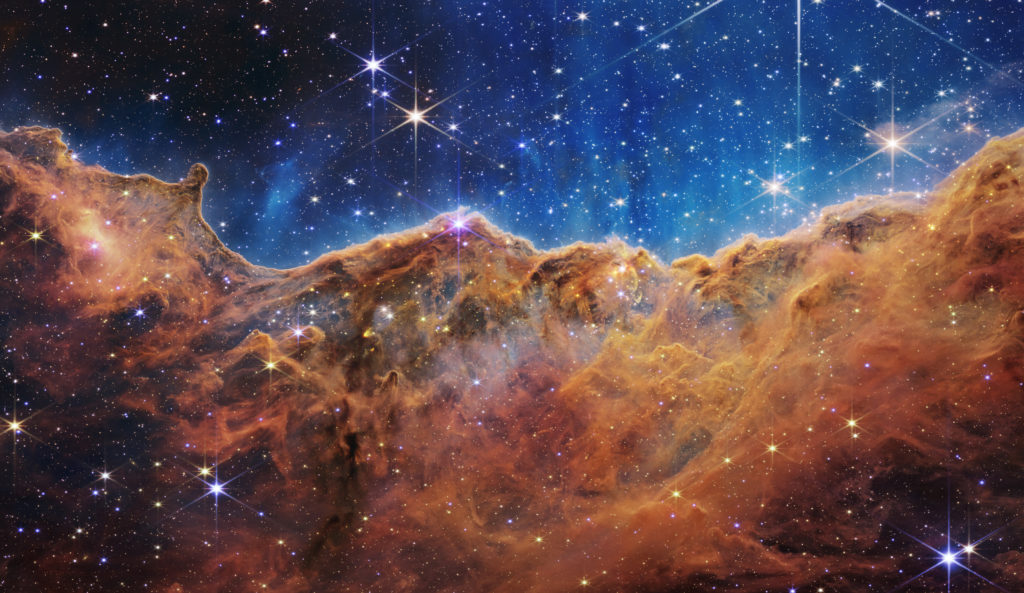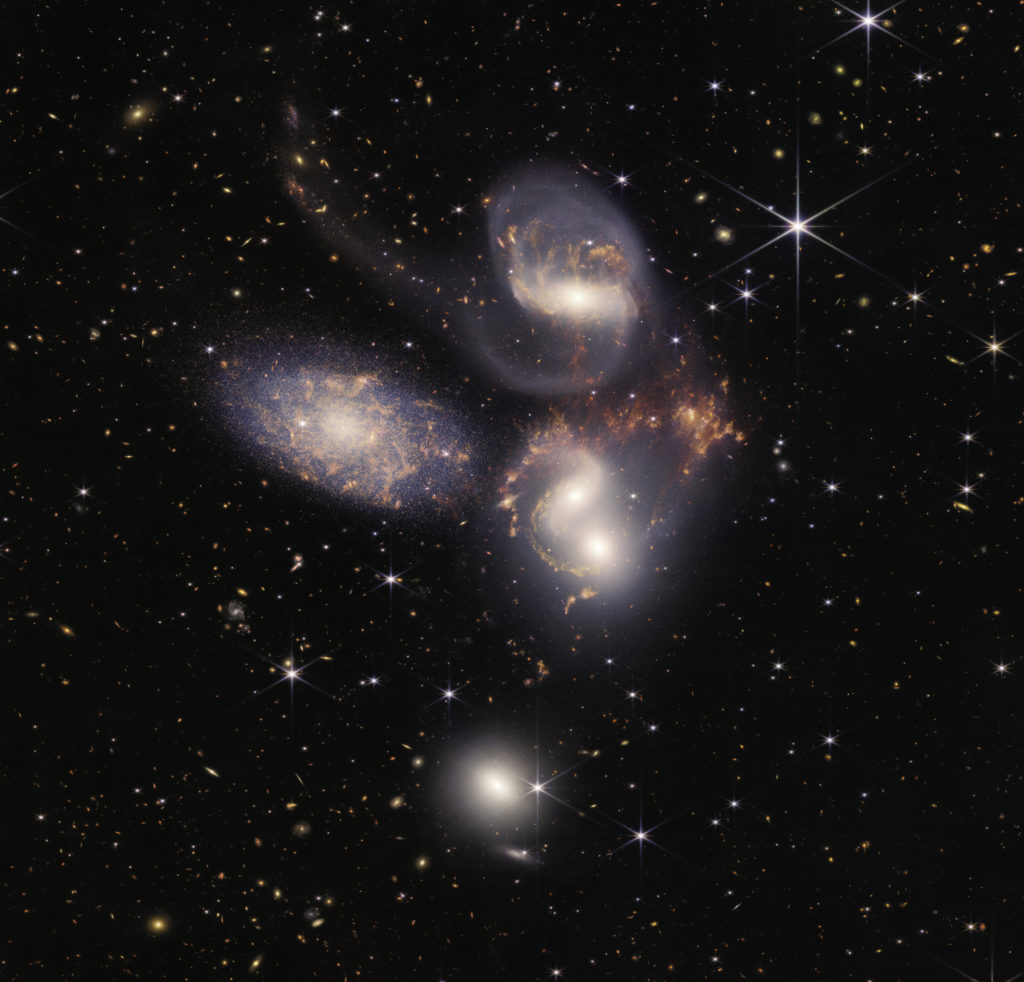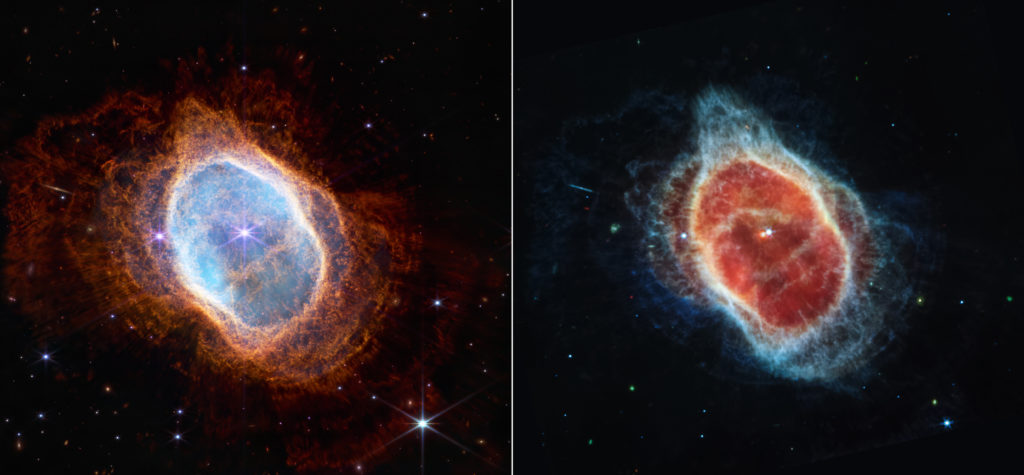Today NASA released a set of amazing images taken by the James Webb Space Telescope, and I’ve saved them here for posterity.
The first is a cluster of galaxies, called SMACS 0723. The light from these galaxies have taken billions and billions of years to reach us, and this is a snapshot from the earliest days of the universe. The streaks you see are the result of gravitational lensing, where light is bent by gravity’s pull from a nearby galaxy.

Next up is the Carina Nebula, where young stars are being formed.

First discovered by French astronomer Édouard Jean-Marie Stephan in 1877 (and who it’s named after), Webb gives us the best look yet of Stephan’s Quintet, a cluster of galaxies.

Here we have two different shots of the Southern Ring Nebula. The image on the left was produced using Webb’s Near-Infrared Camera (NIRCam), while the image on the right is from Webb’s Mid-Infrared Instrument (MIRI).
